Hemidactylus mabouia
—
Tropical House Gecko
Also known as:
Wood Slave, Amerafrican House Gecko, Cosmopolitan House Gecko, Moreau’s Tropical House Gecko, Phantom Gecko
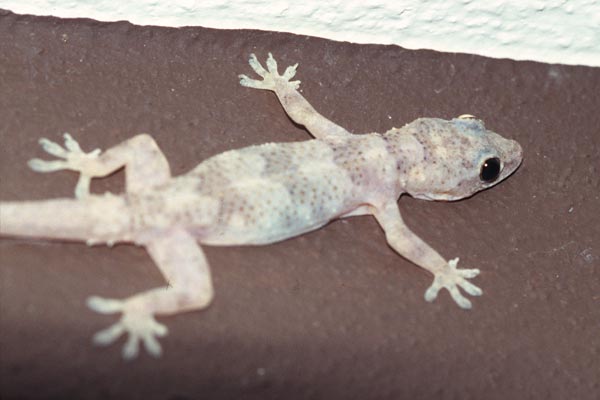
These non-native geckos can easily be seen at night on the walls of houses near the lights. Florida has no native nocturnal geckos, leaving the bugs-by-houses-at-night-eating niche open for several non-native species to exploit.
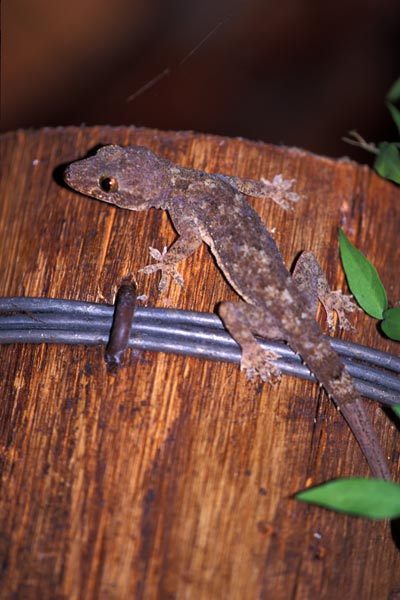
The first thing I did when we arrived around dusk at this, our first tented camp in Kenya, was to start taking pictures of the geckos lurking around on the walls in the reception area. The camp staff seemed to find this behavior surprising in some way. I wonder why?
I'm not really sure whether this one is H. mabouia or H. platycephalus.
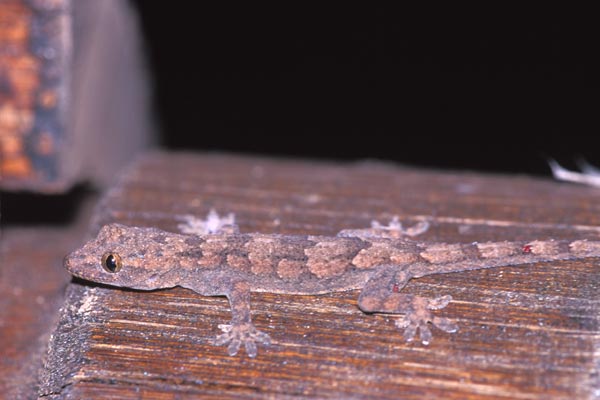
These geckos were present at most of the places we stayed in Kenya. They are good colonizers, having established populations in most tropical and subtropical areas of the world, including Florida. I always felt safer sleeping at night knowing there were such fine geckos protecting our tents.
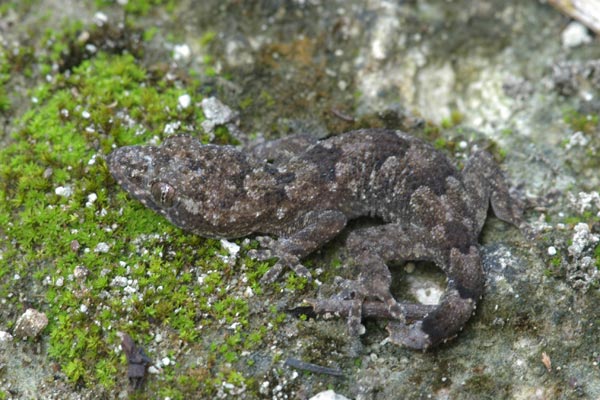
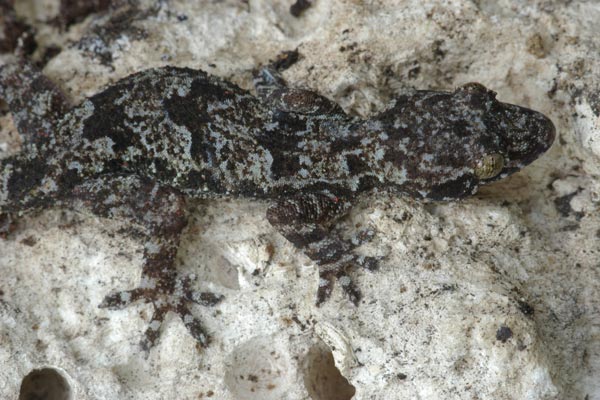
Of the various introduced gecko species in South Florida, Bartlett & Bartlett say that this is the only one often found away from human habitation. I found this tiny youngster (first picture) and this adult (second picture) under hunks of reef coral rock in tropical hardwood hammock habitat.
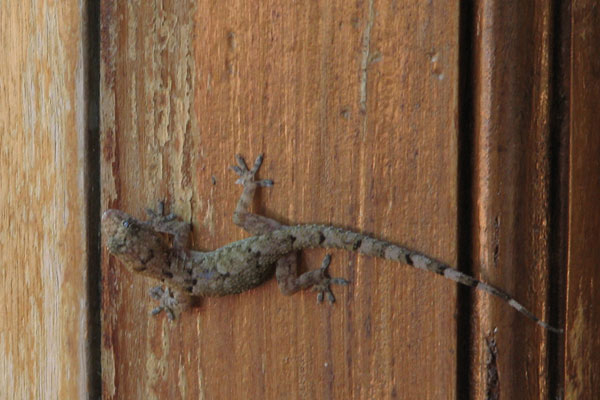
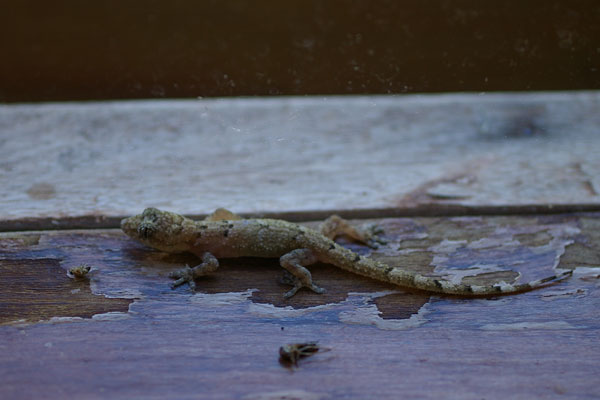
This small gecko was living on the inside of a small snack shop near the beginning of the boardwalk to the spectacular Devil's Throat at Iguazú Falls. Dozens of beetles, moths, and butterflies had managed to get into the snack shop but were having trouble getting out, so this was pretty much gecko paradise.
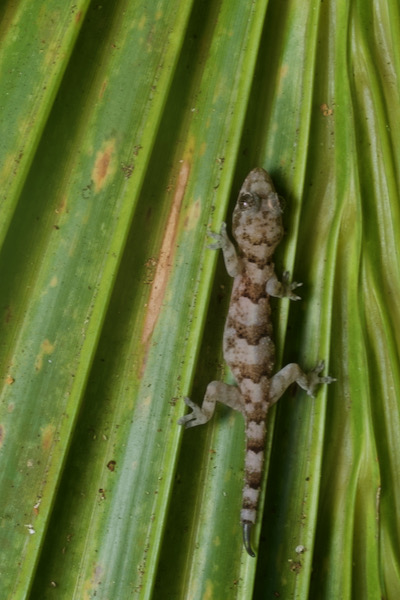
Small gecko on a big palm frond. Cute little thing!
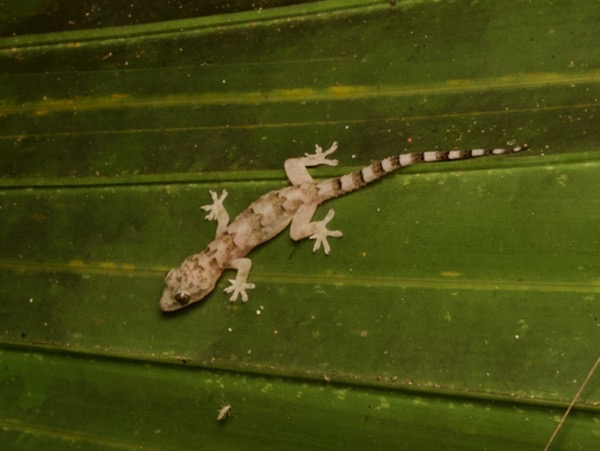
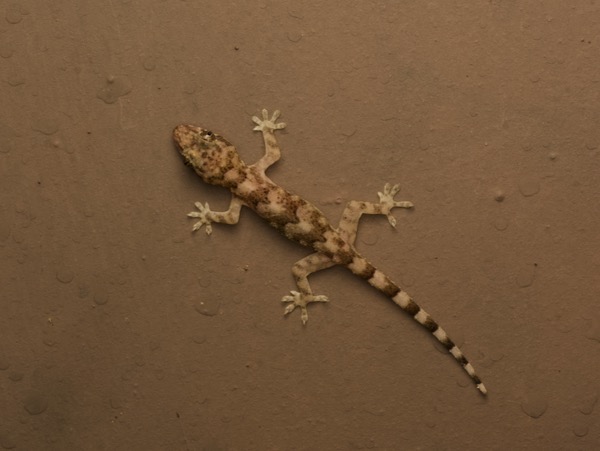
The top gecko here patrolled a palm frond just off the boardwalk. The bottom one kept the back of the big trail sign free of excess arthropods.
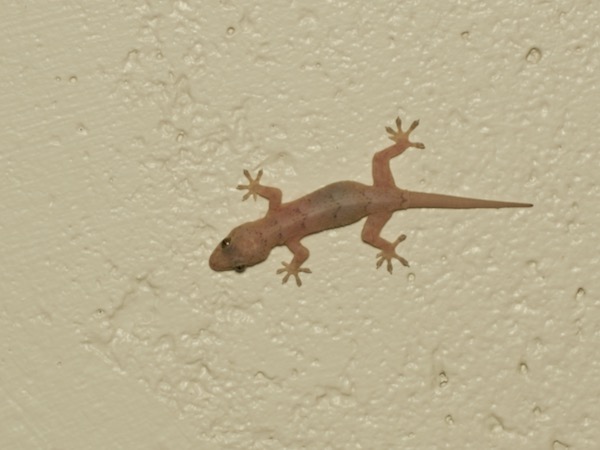

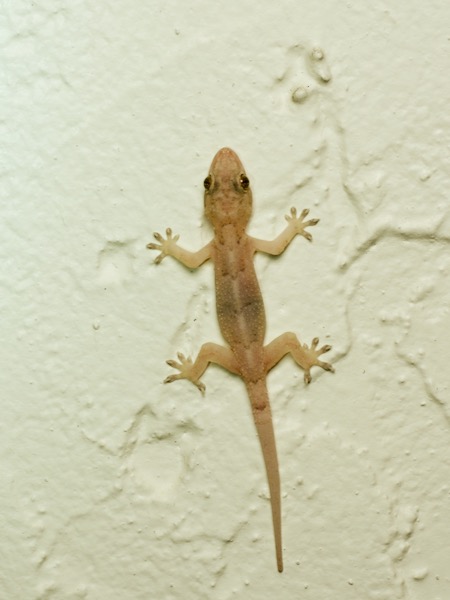
At night, after the visitors to Anhinga Trail have all left, the geckos take over the buildings. Most but not all of them on this evening were this cosmopolitan species.
Online references:
- Father Alejandro Sánchez's West Indian natural history site.
Printed references:
- Ashton, R. E. Jr., Ashton, P. S. 1991. Handbook of Reptiles and Amphibians of Florida, Part Two: Lizards, Turtles, & Crocodilians, Revised Second Edition
- Bartlett, R. D., Bartlett, P. B. 1999. A Field Guide to Florida Reptiles and Amphibians
- Branch, B. 1998. Field Guide to Snakes and Other Reptiles of Southern Africa, third revised edition
- Crother, B. I. (ed.) 2017. Scientific and Standard English Names of Amphibians and Reptiles of North America North of Mexico, with Comments Regarding Confidence in Our Understanding, Eighth Edition
- Glaw, F., Vences, M. 1994. A Fieldguide to the Amphibians and Reptiles of Madagascar, Second Edition
- Henkel, F., Schmidt, W. 2000. Amphibians and Reptiles of Madagascar and the Mascarene, Seychelles, and Comoro Islands
- Köhler, G. 2008. Reptiles of Central America, 2nd Edition
- Spawls, S. 2017. A Guide to Amphibians and Reptiles of the Maasai Mara
- Spawls, S., Howell, K., Hinkel, H., Menegon, M. 2018. A Field Guide to East African Reptiles, 2nd edition